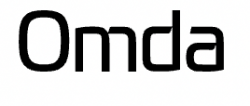OMDA is a Norwegian software company providing digital solutions to the healthcare industry, primarily to medical professionals and emergency responders within the public sector. Initially named CSAM Health Group, the Company was founded by Oslo University Hospital in 1999 and later spun out in 2012. OMDA serves over 500 customers in 27 countries, with the Nordic as the primary market, where the Company operates through seven business segments. The software solution varies from emergency response and blood donation to cancer treatment, focusing on enhancing efficiency for healthcare workers while delivering care safely to patients. OMDA has been listed on Euronext Growth since October 2020.
Pressmeddelanden
OMDA Way to Digitise the Healthcare Sector
OMDA AS (”OMDA” or ”the Company”) provides scalable software solutions to the healthcare sector, such as emergency response systems, primarily through tenured contracts, ensuring recurring revenue for 10+ years. With political headwinds and a strong cash position, the Company is set to grow organically and through acquisitions. However, reduced reliance on acquired growth facilitates the Company to focus on integrating previous acquisitions, thus enabling greater efficiency, lower operating costs, and higher EBITDA margins through scalable solutions. OMDA is estimated to reach an EBITDA of NOK 150.2m in 2025 and based on an applied EV/EBITDA target multiple of 10.4x, a potential fair value of NOK 49.1 per share is derived in a Base scenario.
- Favourable Acquisitions Enables Increased Revenue
Tenders for new suppliers from public-owned hospitals can sometimes take up to ten years; therefore, acquisitions has been the primary strategy for OMDA to gain new customers and revenue streams. However, the Swedish and Norwegian governments have set aside SEK 660m and NOK 1.25bn, respectively, to digitise healthcare, leading to tenders for new suppliers are estimated to be more frequent going forward. Reduced reliance on acquired growth allows OMDA to focus on growing organically and creating synergies, leading to lower CapEx, which enables higher cash flows. Therefore, Analyst Group estimates that the revenue will grow with a CAGR of 18.1% until 2025, reaching NOK 608.6m.
- Positioned to Capitalize on Political Initiatives
Nordic’s most prominent public-owned hospitals have used OMDA’s software solutions over the past 25 years, and as tenders increase, the Company is well-positioned to capitalize on the demand. OMDA’s Coordcom platform, already serving 11% of the European population, aligns with the EU’s directive towards NG112, fueling further possible revenue growth. With the healthcare sector’s sensitivity to change, contracts of +15 years, and a churn below 2% annually, the stickiness of the solution enables up-selling and price increases. Analyst Group estimates ARR to grow with a CAGR of 21%, primarily through the underlying demand to digitise the European healthcare sector, continued up-selling, and price increases.
- Further Integration Provides Compelling Margin Growth
In 2021, OMDA acquired two companies in the emergency segment, initially with EBITDA margins of -4% and 12%. The integration is now completed whereas EBITDA margins have increased to 18.5% YTD. As the 2022 acquired companies’ integration period closes in, the EBITDA margins are estimated to increase further as integration-related salary expenses are reduced. With a strong position, serving nearly all hospitals in the Nordics, OMDA can scale the software without higher sales personnel expenses, enabling lower operating costs as a percentage of sales. Analyst Group estimates EBITDA to expand from 12.9% YTD to 24.7% in 2025 through proven integration effects and a scalable SaaS business model.
6
Värdedrivare
4
Historisk lönsamhet
7
Ledning & Styrelse
7
Riskprofil
Samtliga analyser av bolag från och med år 2020 betygssätts utifrån ett nytt betygssystem - Värdedrivare, Historisk Lönsamhet och Ledning & Styrelse sträcker sig från 1 till 10, där 10 är högsta betyg. Riskprofil sträcker sig från 1 till 10, där 10 är att anse som högst risk. Aktieanalyser av bolag publicerade innan 2020 har betygssatts utifrån en annan modell.
Aktiekurs
N/A
Värderingsintervall
2024-01-19
Bear
18,6 NOKBase
49,1 NOKBull
64,8 NOKUtveckling
Huvudägare
2024-03-27


